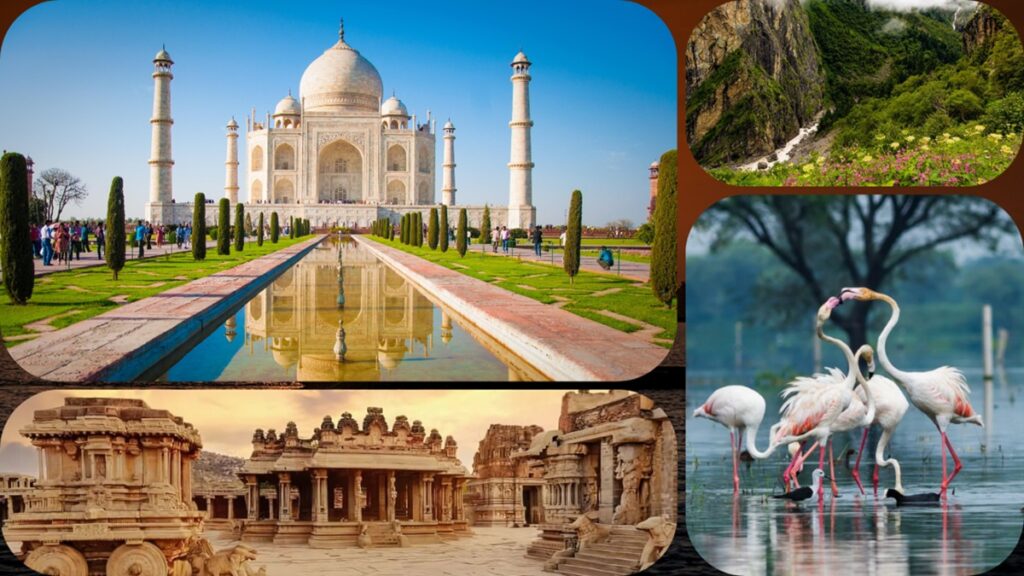Table of Contents
Contents
Nalanda University occupies a distinctive place in world educational history — an institution whose ruins in Bihar and whose modern revival together create a continuous narrative of intellectual endeavor. The history of Nalanda University spans more than a millennium, from its establishment in the classical age of India, through its period of functioning as an international learning centre, through its destruction and its subsequent archaeological rediscovery, and finally to the principled rebirth of Nalanda University in India in the 21st century. This paper draws these threads together into a single, flowing narrative and embeds concise factual answers about founding, establishment, destruction, and fame into the story without posing direct questions.
Origins and Foundation: Founder of Nalanda University
Nalanda’s institutional roots extend to the 5th century CE, when imperial patronage from the Gupta dynasty facilitated the establishment of large-scale learning institutions. Traditionally, Emperor Kumaragupta I (also called Shakraditya) is recognized as the primary founder of Nalanda University; his grants made a large residential university possible during a time of relative political stability. Kumaragupta was succeeded as a royal patron by Harshavardhana, and then the Pala rulers of Bengal (particularly Devapala), who continued to fund the complex and offer grants at the great university, in addition to commencing construction of additional monasteries and lecture halls. As a scholarly centre, Nalanda benefited from donations and grants made in the name of the monastery by merchants, local leaders, and foreign patronage (over time, including from Southeast Asia), which would have created a well-resourced centre of learning in ancient South Asia.
Intellectual Life: Courses in Nalanda University
The courses in Nalanda University formed an unusually broad, interdisciplinary program for the period. While rooted in Buddhist scholasticism, Nalanda’s curriculum extended well beyond strictly religious instruction. Students studied logic, grammar, and metaphysics; Ayurvedic medicine and surgery; mathematics and astronomy; Vedic ritual studies; and a wide range of Buddhist disciplines (including various Mahayana schools). The famed library complex—referred to in classical accounts as Dharmaganja or the “Mountain of Truth”—housed enormous manuscript collections across multiple buildings (named in medieval descriptions as Ratnasagara, Ratnaddhi, and Ratnaranjaka). Some traditional accounts amplify the scale (legendary numbers such as “millions of manuscripts” are often quoted), reflecting the institution’s exceptional reputation as a textual repository.

Nalanda operated as a residential university: students lived in monastic colleges—viharas—attached to particular teachers and lineages. Pedagogy emphasized long-term mentorship, oral transmission, disputation, and commentary-writing. Admission to advanced instruction was competitive: promising students were evaluated and often apprenticed to renowned teachers such as Dharmapala and Silabhadra. The result was a sustained culture of scholarship in which philosophical argumentation, textual criticism, and empirical inquiry—especially in astronomy and medicine—coexisted and reinforced one another.
Nalanda University Architecture: Stones That Speak
Architectural features located at Nalanda University influenced its academic life. The excavated remains and contemporary accounts suggest a composed campus characterized by multi-storey viharas (monastico-residential complexes), open courts, lecture halls, meditation cells for the faculty and students, shrines, and stupas. The spatial logic of the site integrated the utilitarian needs of the institution (dormitories, storerooms, kitchens) with its ceremonial and contemplative spaces, thereby creating a setting that was conducive to sustained study and contemplation.
The renowned library complex — which was said in medieval sources to be extensive and multi-storeyed — served both as repository and symbol. The stone stairways, carved panels, terracotta tiles, and sculpted reliefs encountered at the site exhibit a syncretic art vocabulary in which Buddhist iconography intermingles with motifs taken from broader South Asian art. The architectural complex promoted mobility and interaction: corridors that ran to intimate study niches, courtyards where public discussion was held, and chapels and stupas that rooted the spiritual aspects of scholarship. Such built structures account for why the remnants of the ancient university remain a focus of attraction for architects and archaeologists who care about the ways in which physical form frames intellectual communities.
Global Reach and Legacy: Why Nalanda University Was Famous
Nalanda’s reputation was not by chance; it was the result of scale, interdisciplinarity, and an international student and faculty population. During the early Middle Ages, monks and lay intellectuals arrived at Nalanda from Tibet, China, Korea, Japan, Central Asia, and Southeast Asia. Chinese pilgrims—most famously Xuanzang (Hsüan-tsang) and Yijing—provided detailed eyewitness reports of thousands of resident students, intense examination, and lively philosophical discussion. These reports contributed to projecting Nalanda’s reputation throughout East and Central Asia.
The scholarly production of the university impacted Buddhist teaching, logic, pedagogy, and scientific knowledge worldwide. Tables of astronomy, mathematical concepts associated with numbers in India’s scientific culture, and medical texts traveled with students and pilgrims to far-off courts and monasteries. Interdisciplinary courses of Nalanda University of Nalanda created it a continental center for the flow and exchange of ideas—one of the main reasons why the institution is renowned today.
Ruin and Loss: The Destruction of Nalanda
The life of the old university came to a violent end in the late 12th and earlier 13th centuries CE. The complex was overrun by invading troops under the Turkish commander Muhammed bin Bakhtiyar Khilji. Modern and near-modern descriptions tell of widespread devastation and the combustion of the great library; chroniclers emphasize that irreplaceable manuscripts were destroyed and that scholars were scattered or killed. The early 13th-century destruction is a turning and calamitous point in the history of Nalanda University: centuries of scholastic accumulation were lost, and the old institutional system came to an end.
The destruction of the library and scattering of teachers changed intellectual paths throughout Asia. Some traditions held fast by reformulating texts elsewhere; others endured unbridgeable gaps. The material remains that were left behind were slowly buried under silt and vegetation, to be unearthed years later by archaeologists.
Rediscovery and Archaeology
Systematic archaeological excavations from the 19th and 20th centuries uncovered the foundations and material culture of the ancient Nalanda University. Monastic blocks, stupas, sculptural pieces, and terracotta plaques were unearthed by archaeologists and shed light on construction phases, artistic idioms, and monastic daily life. Contributors such as K.P. Jayaswal and subsequent teams of the Archaeological Survey of India were crucial to the discovery of the site’s layout and material remains. These findings supported a great many medieval accounts and enabled the reconstruction both of Nalanda’s architecture and the lived experiences of its learned communities.
Due to its exceptional universal value, the excavated remains of Nalanda are today a principal heritage destination in Bihar, remembered for pedagogic excellence and cultural importance.
Revival: Nalanda University in India
The 21st-century re-emergence of Nalanda is calculated and symbolic. Following appeals to revive Nalanda as a world university, plans in the early 2000s resulted in a legislative text: the Nalanda University Act of 2010 established the new statutory body. The momentum behind the revival can be attributed to efforts and public support (including a high-profile proposal by President A.P.J. Abdul Kalam in 2006), international consultations, and persistent political will.

The new campus—architecturally sensitive to heritage and environment—was shaped by modern architects such as Pritzker award winner B. V. Doshi. The location is approximately 455 acres in area and was planned with green architecture values: net-zero energy goals, water reduction, plastic-free initiatives, and landscape with water bodies and climatic design. The initial students entered in the early 2010s, and the reconstituted Nalanda University in India aimed to become a center for international studies of peace, Buddhist studies, ecology and sustainable development, and comparative Asian scholarship—all fields that resonate with the interdisciplinarity of the historical institution.
Modern Growth, Global Engagement, and Programs
Over the past few years, the contemporary Nalanda has extended its academic presence and global partnerships. The university has a diverse and multicultural student population from numerous nations and now educates more than 1,200 students in postgraduate, doctoral, and short-term courses from approximately 21 nations. The university has added program offerings, and during the academic year 2025–26, launched further master’s courses in economics, mathematics, philosophy, and Hindi—broadening established areas of strength in Buddhist studies, environment, and peace studies.
Nalanda has signed several memoranda of understanding to enhance research, pedagogy, and cultural exchange, with regional institutes and national arts bodies among them. Cultural collaborations—such as with performing arts academies—seek to bridge scholarship with living traditions, while political and civic leaders have commended the university’s campus model for sustainability; state-level commendations, for instance, have singled out the site as a replicable green design model for Bihar. Top-level visits and contacts—like those with neighboring nations—emphasize Nalanda’s ongoing status as a platform for peace, dialogue, and regional cooperation.
Enduring Legacy of Nalanda University
The story of Nalanda, from its origins in the mid-5th century CE with Kumaragupta I, to its stunningly eloquent, interdisciplinary curriculum, its unique Nalanda University architecture, to its destruction in the early 13th century CE, to the rediscovery and archaeological reconstruction of the old Nalanda University, to the current re-founding and expansion of Nalanda University in India, is a continuous reflection of how societies create, forget and regenerate knowledge. Today’s Nalanda University is striving to realize its ambitions for a sustainable campus, to expand the range of master’s offerings, to intentionally grow international partnerships and collaborations, and to grow the student body. Today’s Nalanda, and under the mandate of this board, is living up to its name, as not just a relic, but as a working, global center of learning that draws upon the rich history and well of knowledge on which the legacy of Nalanda University is built, while addressing the immediate questions of today.
Subscribe Our YouTube Channel: https://www.youtube.com/@BhartiSanskriti-BS









